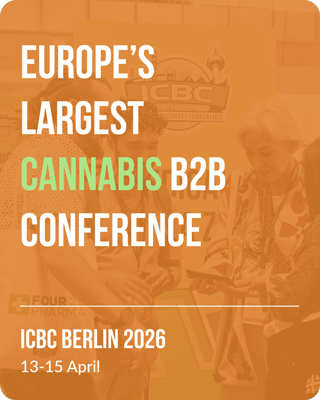
The Threshold for Accepting Cannabis as Medicine

The Threshold for Accepting Cannabis as Medicine
Dr. Jokūbas Žiburkus, PhD for CANNTELLIGENCE
When it comes to accepting that natural substances and plant extracts contain medicinal properties, disparate opinions remain the norm. As it pertains to cannabis, anecdotal evidence of how it helps family members cope with chemotherapy or pain is sufficient enough for some to believe that cannabis has medicinal properties. For others, thousands of years of traditional and western medical practices is simply enough to justify using cannabis as medicine. Finally, some believe that despite thousands of years of practice-based evidence, tissue and animal studies, and hundreds of human survey studies, the acceptance of medical cannabis will only come with double-blinded placebo-controlled clinical studies. These different thresholds of acceptance of cannabis as medicine are understandable given the orchestrated messaging surrounding the plant. Thankfully, these competing opinions invite a more robust discussion about the acceptance of cannabis as medicine and enhance our overall understanding of the plant. Unfortunately, such debates do not necessarily translate to increased access to the plant, especially, for those who need or would like to try it the most.
The cannabis plant and cannabinoids are exceptional in many ways. Yet what the majority of society believed until recently about medical cannabis was overwhelmingly and systematically shaped by the politicians, and not the medical community. Historically, the politicians and special interest groups overpowered pleas of the medical community, which was largely in support of medical cannabis. However, the fact is that cannabis, THC, and cannabinoids have been shown to have many medicinal properties (REF), and there are synthetic and plant-derived THC preparations approved by the FDA (ex. Marinol™) and by the European and Israeli pharmaceutical regulatory agencies (Sativex™).
Cannabis and natural THC are still on the Controlled Substances Act’s (CSA) schedule I. CSA schedule I is for the most dangerous narcotics that have not been shown to have medicinal benefits. On the other hand, synthetic THC (Marinol) is a schedule III drug. This seems to defy logic, but proponents of this thinking suggest that there are no robust clinical studies with the cannabis plant itself, as opposed to isolated THC or cannabidiol (CBD). These types of studies exist and the use of cannabis flower (and extracts) as medicine is in fact prevalent in Israel, including vaporization in the hospital and elderly home care settings. Similar studies performed in the US and other developed countries, would certainly lower the universal threshold of acceptance for medical cannabis.
It’s important to highlight that THC is only 1 out of 115 or more cannabinoids found in cannabis. The second most prevalent cannabinoid in cannabis is CBD, which is showing significant therapeutic potential in the treatment of epilepsy, pain, inflammation, and nausea. Currently, many cannabinoid combinations, such as THC/CBD/CBG/CBC/etc. are being tested for various clinical conditions (CBG – cannabigerol; CBC – cannabichromene).
In addition to containing medicinal properties, cannabis intoxicating properties are enjoyable and tolerable for many. Numerous reports support that cannabis helps various sectors of society to function effectively in their daily lives. Even high level executives, like Michael Bloomberg (Former NYC mayor), George Zimmer (The Men’s Warehouse), and Richard Branson (Virgin) find cannabis enjoyable and beneficial when used recreationally or medicinally. This is in contradiction to studies showing that frequent use of cannabis impairs cognitive executive functions, like planning, execution, and motivation (REF). This also suggests that the science of cannabis and our limited interpretations of cannabis based on THC and CBD alone is grossly inadequate. With the increased access to medical and recreational cannabis around the world, many more studies have been initiated and the following decades will likely be dubbed ‘the golden cannabis age’; where the rebirth of cannabis-based medicines will dominate human and pet therapies, while reshaping the pharmaceutical industry and standardized methods of clinical care.
Before the 20th century, discussions on cannabis were mostly amongst farmers, physicians, medical societies, and pharmacies. At the turn of the 20th century, US pharmaceutical regulatory agencies began regulating cannabis products (1906). In 1932, cannabis was boldly tainted by politicians and the infamous Reefer Madness movie was created. Reefer Madness undoubtedly had racial and chauvinist undertones, and most importantly, did not represent the facts about cannabis. The movie utilized manipulative tactics by building a sense of fear and making many believe that cannabis is debilitating, highly dangerous, and fuels violent crime. The eradication of the hemp crop, and removal of cannabis from the US pharmacopeia in 1942 had long lasting effects on many societies in the world. The results have shown an increase in incarceration rates and a decrease in access to natural substances for health ailments.
‘Reefer Madness’ propaganda was pervasively prophesized by the US government and media throughout the mid-20th century. This sensationalized marketing campaign, combined with Nixon’s disdain for the Hippies, resulted in placing cannabis on the Controlled Substances Act Schedule I in 1971. The ‘hippies’ response was steadfast, resulting in the decriminalization of cannabis in Oregon in 1973. However, designation of cannabis as a dangerous and highly addictive narcotic without known medicinal values empowered other governments around the world to severely limit the supply and licensing for cannabis and its research. Government funding agencies were favoring applications in which the central hypotheses demonstrated the negative effects of cannabis on brain development and function, showed its addictive properties, and supported the ‘gateway drug’ hypothesis. Clearly, this agenda was not driven by the medical community, but by politicians and their influencers.
There is no question that negative cannabis propaganda has had far reaching implications world-wide. In fact, in many countries, such high level figures as Ministers of Health, distinguished professors, and politicians tout the outdated ‘gateway drug hypothesis’, cannabis’ addictive properties, and the lack of evidence showing it contains medicinal properties. These old arguments are unsubstantiated, since the debate is about factual evidence and clinical studies of medicinal properties of cannabis. We need to acknowledge certain facts: a) that millions use cannabis as medicine; b) the systemic suppression of research that would show the medicinal benefits of cannabis; and c) recent findings in the literature and statements by major medical societies in support of medical cannabis. All of a sudden, many Europeans are surprised to see the US changing its stance on medical and even recreational cannabis and the growth of this industry at a near exponential rate.
Cannabis Has Therapeutic Properties – The Medical Community Has Spoken
In a recent report by the National Academy of Sciences, the brightest minds in science and medicine have spoken – cannabis has medicinal properties and we need to allow for it to be studied freely. One section in the article that reviewed thousands of studies called ‘Therapeutic Effects,’ states: “One of the therapeutic uses of cannabis and cannabinoids is to treat chronic pain in adults. The committee found evidence to support that patients who were treated with cannabis or cannabinoids, were more likely to experience a significant reduction in pain symptoms. For adults with multiple sclerosis-related muscle spasms, there was substantial evidence that short-term use of certain “oral cannabinoids” – man-made, cannabinoid-based medications that are orally ingested – improved their reported symptoms. Furthermore, in adults with chemotherapy-induced nausea and vomiting, there was conclusive evidence that certain oral cannabinoids were effective in preventing and treating those ailments.” In conclusion the authors state, that there are still ‘specific regulatory barriers, including the classification of cannabis as a Schedule I substance, [that] impede the advancement of research”. Could this be interpreted as a direct message to the US government to reconsider keeping cannabis on Schedule I?
97% of Medical Students Believe that Cannabis Helps
In the NAS review, world renowned, established scientists have come to the conclusion that cannabis has medicinal properties. But what does the young, incoming generation of doctors think? The answer to this question comes from a recent survey study that was conducted at the University of Colorado School of Medicine. When the medical students were asked what they thought about cannabis, 97% of them believed that “further marijuana research should be conducted, and believed marijuana could play a role in the treatment of various medical conditions.” Overall, the study concluded that “medical students support marijuana legal reform, medicinal uses of marijuana, and increased research, but have concerns regarding risks of marijuana use, and appear hesitant to recommend marijuana to patients.”
Seasoned and rising healthcare professional have spoken. What is our government’s response? What do you believe and why? Will cannabis become as prevalent in use as alcohol for recreational use or ibuprofen for pain? When it comes to cannabis, we are undoubtedly witnessing a dramatic shift in global attitudes and understanding of the cannabis plant. Germany now stands at the forefront of the European cannabis renaissance. Scientists, regulators, drug developers, and healthcare practitioners are quickly joining hands, widening the dialogue and exploring all of the therapeutic possibilities of the plant.
CANNTELLIGENCE holds the rights to this blog post. Published here with special permission.
Share article
Ticket Prices increase
JANUARY 28

Ticket Prices increase
JANUARY 28

Join Our Awesome Community
Join Our Awesome Community
Join Our Awesome
Community
Get all the latest industry news
delivered to your inbox



